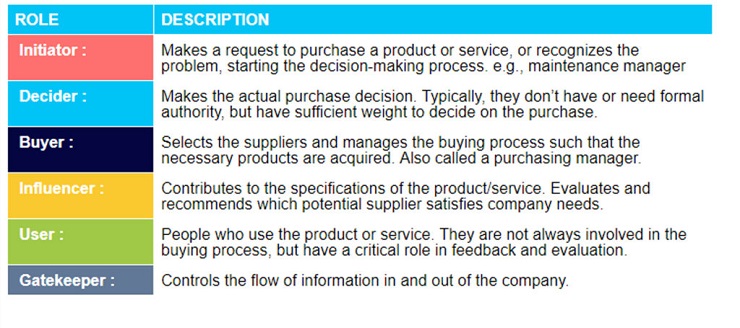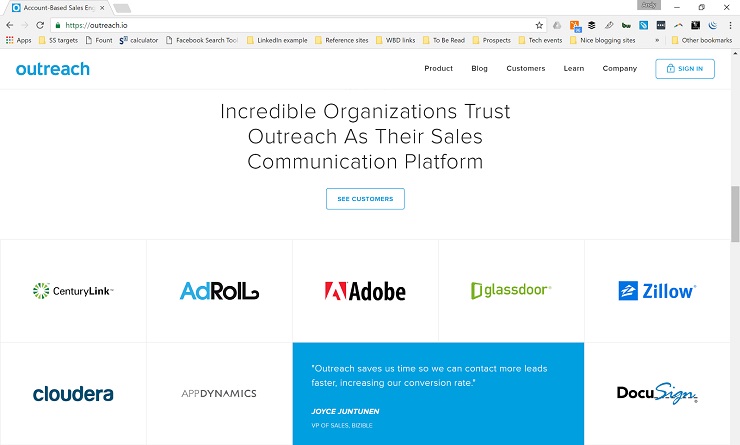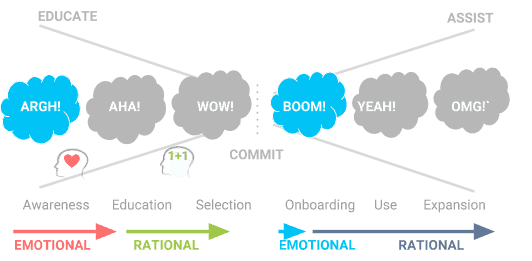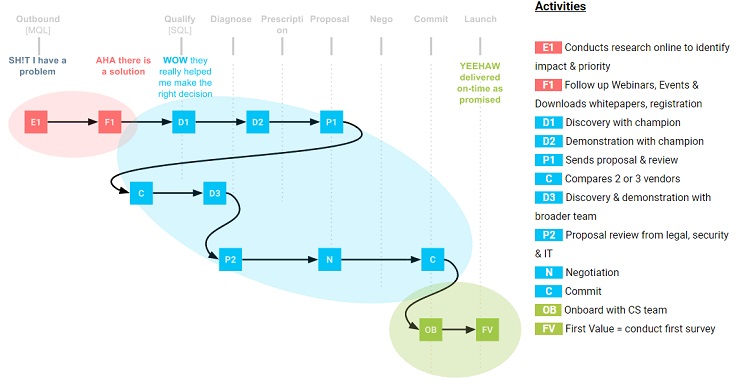Most people in business today are hungry for growth, however they can find it—winning repeat business, targeting new markets, or creating new products.
What a lot of people don’t think about is how they can make bigger sales by targeting larger customers within the scope of their businesses. This means increasing your average contract value, while selling the same basic product.
For example, if you sold a CRM for $100 per seat and sell an average of 10 seats per customer you would earn $1000 for that customer. What if you could find a company with 1000 seats at $100 per seat, $100,000. Maybe 1000 seats? $1,000,000!
It sounds easy right? If only it was! But if you know what you’re doing, this is a really ripe opportunity to bring in more money.
Why Closing Bigger Deals Makes More Money, Faster
This might seem obvious, but there is a huge benefit to selling larger, more complex deals, bigger than you might expect. For example, let’s compare the number of deals required to generate $1 million in revenue with differing average contract values (ACV):
It look like a no brainer, doesn’t it?
Now let’s layer in the time it takes—the average number of days it takes to close a deal from start to finish:
When you look at it like that, even though big deals take more time individually, the total amount of time you need to hit $1 million in revenue still ends up a lot longer when you’re making smaller deals. This really strengthens the case for aiming higher!
So why don’t companies like Zendesk, Typeform, Insightly, Xero and other companies famous for selling lots of smaller deals, start to shift focus and target larger deals? (We call this “going upstream.”)
The reality is that a lot of them try, but there are significant challenges in doing so.
Why is it More Difficult to Close Larger Deals?
There are eight common challenges I see when businesses first attempt to go upstream and sell bigger deals:
1. Longer sales cycles – they could be anywhere from 3 to 12 months
2. A lot more people to deal with – It’s not just a single point of contact anymore. Now you’re dealing with the leadership team, legal counsel, IT department, potential shareholders, and any other parties with an interest in the results of the business. Here is an example below, and don’t worry, we will go into more detail on how to deal with all these people later.
Source: Winning by Design
3. More due diligence needed on the tech side – Data protection and security are major priorities for most enterprises.
4. Trickier legal requirements – The cookie-cutter terms of service you used to use aren’t appropriate anymore, because each deal can make or break the business. You need to be flexible.
5. You need to build way more trust – Enterprise companies often like to commit to software projects for over a year, and to be doing that with a little whippersnapper upstart SaaS business can be a challenge for a lot of these large corporate types. The two best ways to gain this trust is to be 100% transparent with your financial stability, or provide social proof and case studies from other enterprise clients. Just like Outreach.io does below:
6. Onboarding is more complicated – You need to educate and engage all the users within the business so that they see the value in using your technology as soon as possible.
7. You need to provide more service – It’s not only the complexity of the purchase decision that increases, but also the complexity of implementation. It means you’re managing more people, more data, and inevitably integrating with other technologies.
8. 24/7 support – Support needs a “follow the sun” mentality Larger companies have people located all over the world, so you need to be able to support their needs if and when they arise, probably at a higher level than you are used to.
Closing Bigger Deals Takes Longer
All of these challenges boil down to a more complex sales cycle, one that’s longer and has more steps in the process. This is tough, because, as many a wise salesperson has said, “Time kills all deals.”
The additional steps required can drastically increase the number of days it takes to close your deals, known as your sales cycle. Every sale you make has a cycle, and as you move through it, you get closer to making a sale.
It’s very important to pay attention to that cycle, because any “no” you get along the way provides you with valuable feedback to improve your process. Of course, the ultimate feedback in sales is whether someone purchases your product, which closes the feedback loop.
Let’s take a look at a typical, relatively fast sales process for a deal worth less than $5,000:
If there is a mistake in execution, like providing a proposal too early without diagnosing the right solution, you will discover it within the typical 30 days sales cycle, as the customer goes through the feedback loop.
The challenge is, when you are making larger deals, there are multiple hurdles to clear at every stage of the process, and the stages need to be repeated as you deal with more people from the company you are selling to:
By adding these additional people and steps, you stretch out the sales cycle and delay the feedback loop. How does this impact your business?
The longer feedback loop makes it harder to identify issues, and prevents your team from making adjustments that will correct them. In other words, you end up spending a lot of time working on a sale before you realize a problem, and then it’s often too late in the game.
For example, let’s say you’re moving through a long sales cycle, and eventually you talk to someone high up in the company, only to discover a new business or tech requirement like a security issue or budget limit. The deal’s busted. If you knew about the requirement from your first conversation, you could maybe tackle it early on, or at least not waste a bunch of time on a deal you can’t win.
Here are some great tips from Tim Hwang, by the way, on why you need to do a post-mortem when you a deal falls through.
Dilbert
The reality is that these are never one-size-fits-all deals. Many larger organizations have unique requirements and need specialized service, which can add additional strain on your resources and add risk to the sales process.
But, as discussed at the start of this post, these deals are still worth it, because they offer the ability to significantly grow your business.
So how do you close them?
3 Steps to Closing Bigger Deals Faster
There are a lot of elements that need to go right in order to close these big deals faster (remember, the longer it takes the more likely it will fail). The good news for you is that they don’t happen by accident.
Closing big deals is a deliberate process that you can replicate within your business. So let’s unwrap it for you in three steps.
1. Align with your customer’s buying process
Ever since Dale Carnegie pioneered the sales funnel back in the 60s, salespeople, managers and businesses have been setting up series of steps that they can walk their prospects through, ensuring they are somewhat in control of the sales process.
There are two main issues I see when people try to make larger sales:
First, they don’t change their sales process for the new reality of the larger sale, trying to shoehorn customers into the same process they used for shorter, faster sales, and making everyone unhappy.
The second and most important issue is that they ignore the customer’s preference, trying to stick to the ol’ Dale Carnegie approach no matter what. They never even talk to the customer about how they want to go about purchasing your product. This is crazy!
So how do you align your sales process to the customer’s preference?
Check out the picture below. It looks different than a normal sales funnel, right? It has some elements of a normal sales funnel. This is a visualisation of a customer’s buying stages, tracking their progression from awareness, to education, to selection to a mutual commitment. Unfortunately customers don’t think about the purchase in a buy stages but in experiences.
Source: Winning by Design
Do your customers ever call you and ask you, “I am now aware of my problem, can you please educate on how to solve it?” Maybe they ask, “After doing some research, I’m now ready to make a selection, can you help?”
Customers don’t speak that language. You need to think about what the customer experiences:
- ARGH! I have a problem and it is impacting my business in lost revenue, opportunity or efficiency;
- AHA! There are solutions out there in the market that are going to be able to solve my needs;
- WOW! Finally there is a vendor that understands my needs and can help resolve the challenge;
- BOOM! The vendor has worked hard to implement their solution and I am starting to see how I will get value;
- YEAH! The vendor has delivered on their promise and I am receiving recurring value;
- OMG! There must be other people in my business who could value from this, let’s expand the use.
Remember, the steps in this process must involve emotional connection, not just data. So what is the best way to understand this journey from the customer’s perspective? Talk to them!
You want to have a conversation with your customer, which can be feel pretty broad, but that ultimately is trying to identify what the different stages of the process are for them: What is their ARGH? What’s their AHA? What’s their WOW?
Also, sometimes customers aren’t forthcoming with that kind of information, so here are some tips:
- DO use a whiteboard to document the customer’s buying journey as you discuss it with them
- DO use third party stories with your customers to offer suggestions on how other people go through a similar process
- DON’T treat every comment from customers as gospel; ensure you get validation from other customers or previous selling experiences
- DO ask the customers how they have made similar decisions in the past.
- DON’T assume they are going to follow the same process as a smaller, transactional purchase.
Here is an example of a customer buying process and associated activities.
Once you have a strong understanding of the customer’s buying process, you can create a sales process that makes more sense. There is a great book by Jason Jordan, Cracking the Sales Management Code, that explains the process of identifying the key moments in your sales process, to help you impact and measure them.
These moments can include a customer demonstration, receiving a proposal, conducting a legal review, or talking to a broad section of stakeholders. But whatever they are, they need to be aligned to the customer’s buying process. Here’s an example of what a sales process for a large software deal might look like:
Example sales process from a mid-size software sale ~100k – $250k
It’s important to document and visualize these steps when making larger deals, and to measure your progress. Documenting and measuring progress allows you to shorten the feedback loop, because you can more easily guide the customer from step to step, and learn what you can do to refine and shorten your process.
One common mistake when mapping out this process is to make these moments too fuzzy, or open to interpretation. It’s got to be as clear and objective as possible. The best way to do that is to assign a couple of questions to each key step. If the person making the sale can’t answer the question, you can’t move on. Using the example above, here’s what those questions could look like.
Questions to answer before moving from Product Demo > Buying Process Identified:
- Can you clearly articulate the buying process?
- Who is involved from the customer’s perspective?
- Have you gathered enough information to create the project outline?
Questions to answer before moving from Demo with IT & Security > Formal Proposal Sent:
- Are there any open objections from their IT & security team?
- Do you have all the information you need to send a formalized proposal?
2. Engage multiple stakeholders
Like we talked about earlier, one of the biggest obstacles when you try to make bigger deals is the engagement of multiple people who are involved in the business and need to be in on the sale—the stakeholders.
Think about if you were to go and buy a TV for yourself. You’d walk into the store, probably without much research, talk to a sales rep, and make a decision. What’s the worst that could happen? You get a TV you don’t love or you return it.
But what happens if you are buying 15 TVs for your office? This drastically changes the potential outcomes, if you get this wrong, it isn’t just your viewing pleasure that is affected. If you screw up, you cost your company a lot of money, negatively impact a lot of your partners and colleagues, and worst case, lose your job and ability to pay your mortgage!
In short, large purchases tend to cost so much that they are meaningful for the business, so companies tend to want more stakeholders to be involved in the decision-making process. The recent trend is that the number of people involved in these purchases is actually increasing.
According to CEB, the average number of people involved in a purchase decision in 2015 was 5.4. Fast forward 18 months and that number has increased to 6.8 and continues to climb. It isn’t just because organizations are becoming more risk averse—they are also relying on a greater range of specialized skills, and the people providing those skills need to have input into the purchase decision.
How do you overcome this challenge?
You need to build a broader base of support within the organization you are selling to. This process starts by identifying who those different people are.
Identifying them is a lot easier than it sounds. Unfortunately, people don’t simply list this kind of information on their LinkedIn profiles. The reality is that it can even shift throughout the sales process.
You need to identify the different roles within the the group of people who need to make this decision. They typically include some common characters, regardless of the product you have or type of large company you are selling into.
The starting point is always to get the initiator to help identify the key people involved. Here is a table to help you understand the different roles people usually play within a purchasing decision:

You need to begin finding other influencers within these larger organizations, who can help chart your path and coach you through difficult situations. This means you may need to prospect into these organizations to find the people who feel the pain you are solving, see the impact of your solution solving that pain, and are willing to influence or join the purchase committee. This process is called multi-threading.
If you are looking for some actionable tips to begin your prospecting to these people of influence, check out this post from Gabe Arnold.
In any purchasing committee, the different roles have differing needs and requirements, and will respond to different messaging. So the messaging you are providing to your Users is going to be very different from the Gatekeeper, Decider or Buyer. When you are thinking about your approach to each of these unique roles, list them and identify the appropriate messaging. Once you have mapped this out you have gone a long way towards securing your ability to influence and control the customer’s buying process.
Now that you have mapped out the different stakeholders within the business, you need to engage these people regularly, along with different stakeholders from your own business. This is called “multi-threading,” and it allows you to reduce the risk of individual personality clashes scuttling the deal, while increasing the influence you can build in the company.
Source: Winning by Design
For example, you wouldn’t get one of your support reps to contact their CEO. You need to align the roles by hierarchy to demonstrate the appropriate respect and give yourself the best chance of creating positive relationships.
3. Hitch the wagons together
So we have talked about truly understanding the customer’s buying process, and mapping the key stakeholders who are part of the buying committee. How do you use that to close complex deals faster?
Easy, you need to hitch your wagons together!
WTF is hitching the wagons together? In the Wild West, hitching the wagons together ensured that the wagon train would stay together and not get separated. Wagons getting separated is a common reason why sales go dark.
Think about each stage in the customer’s buying process being a wagon. If you don’t link one stage to the next, then the sales process is broken and you have to start again, wasting those 6-9 months you have already sunk into the process.
As discussed earlier, stages are aligned with conversations and meetings with your customers, so you are going to think about meetings as your wagons.
If you deliberately connect each meeting together and who is involved from the customer and seller side, you obtain a mutual commitment and have everyone marching towards the same next step.
So often, people leave meetings with no clear and definite next steps. The appropriate end goal of a meeting is very rarely to win the deal, rather, it is to secure the next meeting.
To ensure you and your customer are marching toward the same outcome, you need to set up your meetings correctly and clearly state “what happens next.” Below is an example of a simplified sales process that provides an indication of what the next step should be in the conversation.
Once you have that process in place, you can use the framework below to get your meetings on track from the start, get everyone heading in the same direction and then step it up to the advanced elements required to win complex deals.
To hitch the meeting wagons together, there are two crucial areas that are the basics you need to get right, numbers 1 and 2 on the diagram below:
Create concurrent streams of activity
When dealing with multiple stakeholders, it is important that everyone is heading in the same direction to ensure success. It can be tough to corral these departments to work alongside each other, but if you can pull it off, it reduces your risk of wasted time and effort.
We have highlighted this in the picture below. In this example, Demonstration, Proposal & IT Review can’t start until the Discovery is completed. With all of these actions stacked next to each, end to end, like in this example, it is a single stream of activity drastically increases your sales cycle.
Source: Author
To avoid this, you need to have multiple elements of the sales process going at the same time. That means you need to have a strong understanding of what makes a successful outcome with your own product, including two vital pieces of information:
- The business IMPACT of solving the problem. What is this going to mean to the bottom line, i.e. how much money it will make, or save, for the business.
- The CRITICAL EVENT timeline you are working towards. These events can be budgeting windows or organization-wide initiatives. Or external events like regulatory changes.
This helps you understand why the company wants to purchase your solution, and the timeframe they need to do it in, and once you understand that, you can take steps to do multiple steps at once.
For example, while the managers and executive team are receiving their first introduction to your solution, you could start demonstrating your solution with the end users. At that stage, you could engage their legal team to start negotiating the Proposal. Prior to completing the Demonstration phases, it may be worth starting Selection and IT Review while the other streams are in play.
Source: Author
If you can pull this off, you shorten your feedback loop for deals you are going to lose, and decrease the sales cycle for those you are going to win!
Conclusion
There’s a chance you’re just fine with smaller deals, and don’t need to start chasing the big fish. On the other hand, if you are in a competitive marketplace, and there is a significant opportunity for you to pursue these bigger opportunities, the rewards can be huge!
But it definitely isn’t easy.
These deals don’t rely on a single person in the company making the decision. It’s a challenging pursuit and you need support from a lot of different areas. The payoff, however, can be absolutely worth it.
I hope this post gives you a crash course on what it takes to streamline these bigger, complex sales. Remember, the goal is to shorten your feedback loop when sales don’t work out, and shorten the time it takes for those that do.
You can do that by:
- Meeting your customers’ preferences;
- Engaging with many people at once; and
- Hitching those wagons (steps in the process) together.
Are you pursuing larger, complex deals? If not, what’s holding you back? If so, have you been successful in pulling them off? Let us know in the comments, and happy selling!


































